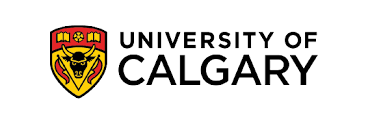University of Calgary: Innovative teaching method allows students to take a field trip without ever leaving the lab
In the Faculty of Science, first-year undergraduate students are exploring river valleys in Utah without leaving campus. Using a holographic model, developed using software from Clirio Inc, approximately 460 students participated in a geoscience lab using HoloLens, an augmented reality / mixed reality headset.
The Department of Geoscience has been working hard over the past several years to bring varied learning opportunities in geoscience to the forefront, and HoloLens headsets are part of this initiative. Drs. Adam Pidlisecky, PhD, Annie Quinney, PhD, Alex Dutchak, PhD, Glenn Dolphin, PhD, and geoscience student Haidar Putra collaborated to bring the project to life.
When wearing a HoloLens, a virtual outcrop model (VOM) is projected in front of the student’s eyes, allowing them to move around and interact with the model in 3D space, without leaving the classroom.
Photo above: Geoscience students, from left, Nicole Garner, Emma Hicklin, Kylie Tiedje, and Nichol Gillan use the HoloLens during a geoscience lab (HoloLens image superimposed).
Student-generated models allow for targeted design
“We’re trying to modernize a lot of what we’ve been doing,” says Pidlisecky, who is the associate head, strategy and innovation, and academic entrepreneur-in-residence in the Department of Geoscience.
As part of our commitment to innovation, we’re trying to bring in modern technologies to the classroom and apply them in innovative ways to create inclusive, accessible, immersive experiences that allow for a broader range of students to experience and learn geoscience.
The team sought the advice of Putra to experiment with the new technology and create mixed-reality models for geoscience learning. Pidlisecky says providing an opportunity for a student to design the solution is in line with the spirit of innovation at the University of Calgary.
“Haidar, having taken the course relatively recently, was well-tuned to the mindset and needs of the students, and was thus an obvious choice for this project. Innovations often come from people who are very close to the ‘customer pain point’ and what the customer problem is. If we are solving problems associated with improving student outcomes, it’s important that we think of ways to capture their voice and empower them to be part of developing solutions.”
Putra, who is in his last year of his undergraduate studies, is studying geology (honours) with a minor in management and society. He says he loved the experience of being able to use art in education and using mixed reality to add exciting variety to the student learning experience.
“Experiencing the simulations virtually makes education 10 times better, in my opinion,” he says.
His fellow students agree. The feedback has been overwhelmingly positive.
“There were some students who could really use this technology to its limits,” Putra tells. “They would actually move around, explore, and look under the model.”
Holograms provide easy access to remote locations
Quinney, who teaches the widely popular “Dinosaurs class” says they hope to develop more content in the near future, including a protected dinosaur dig where few are permitted to access.
Beyond its obvious “cool” factor, the use of holograms to study geoscience also brings a host of benefits when it comes to accessibility.
While the logistical challenge of taking a class of 460 undergraduates out to a remote site is apparent, Dutchak says the hologram-based technology can serve as a proxy for getting out into the field.
“It’s mostly accessible to people regardless of where you are, what your education level is, and what your capabilities are,” he says.
“Geology instructors have been relying more and more on VOMs for teaching, and especially when field schools were closed for two years during the COVID-19 pandemic,” Dolphin says. “However, no one has done any systematic investigation into their efficacy as a teaching tool. One of the goals is to document whether and what students learn through the use of VOMs, delivered in a mixed-reality environment. It’s one thing to have an innovative and novel teaching tool, but it also has to work.”
The team also wants to make the technology useable by their colleagues across the department.
“Ultimately, we would love for other instructors to suggest what content would work for the learning outcomes they’re trying to achieve.”

